
World Migratory Bird Day (WMBD) was established in 1993 to connect people who live in important migratory bird wetland habitats from across the globe. It is a celebration of these various ecosystems, the birds that inhabit them, and the people who are trying to help save these wetlands.
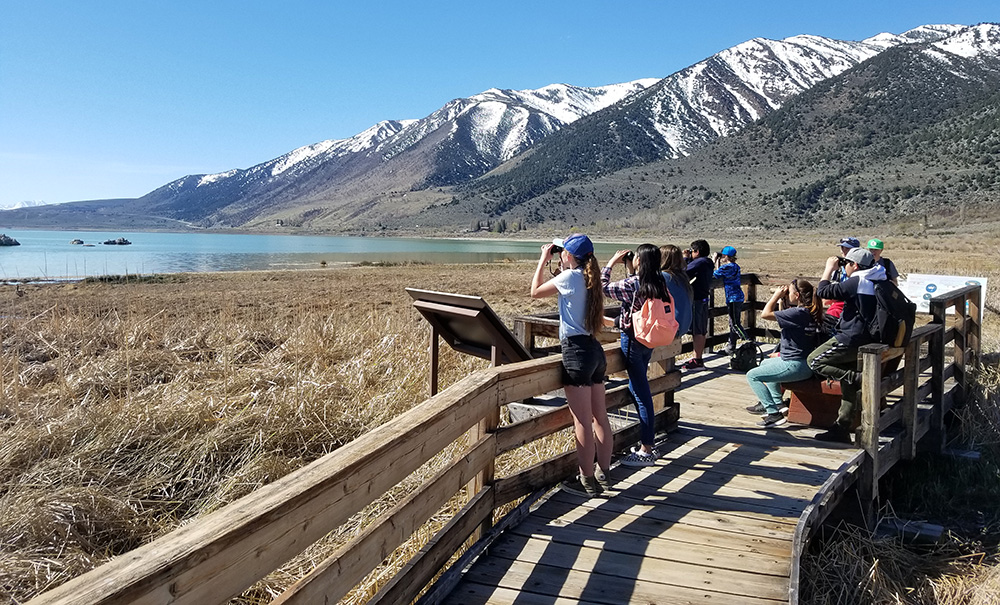
This spring the Mono Lake Committee partnered with students from our local Lee Vining Elementary School to celebrate WMBD and discuss this year’s theme: Protect Birds: Be the Solution to Plastic Pollution. The goal of WMBD 2019 is to raise awareness of the effects of plastic pollution on migratory birds, get students in the field, and then share their experience during a live video conference with other students across the Americas—from Canada to Colombia.
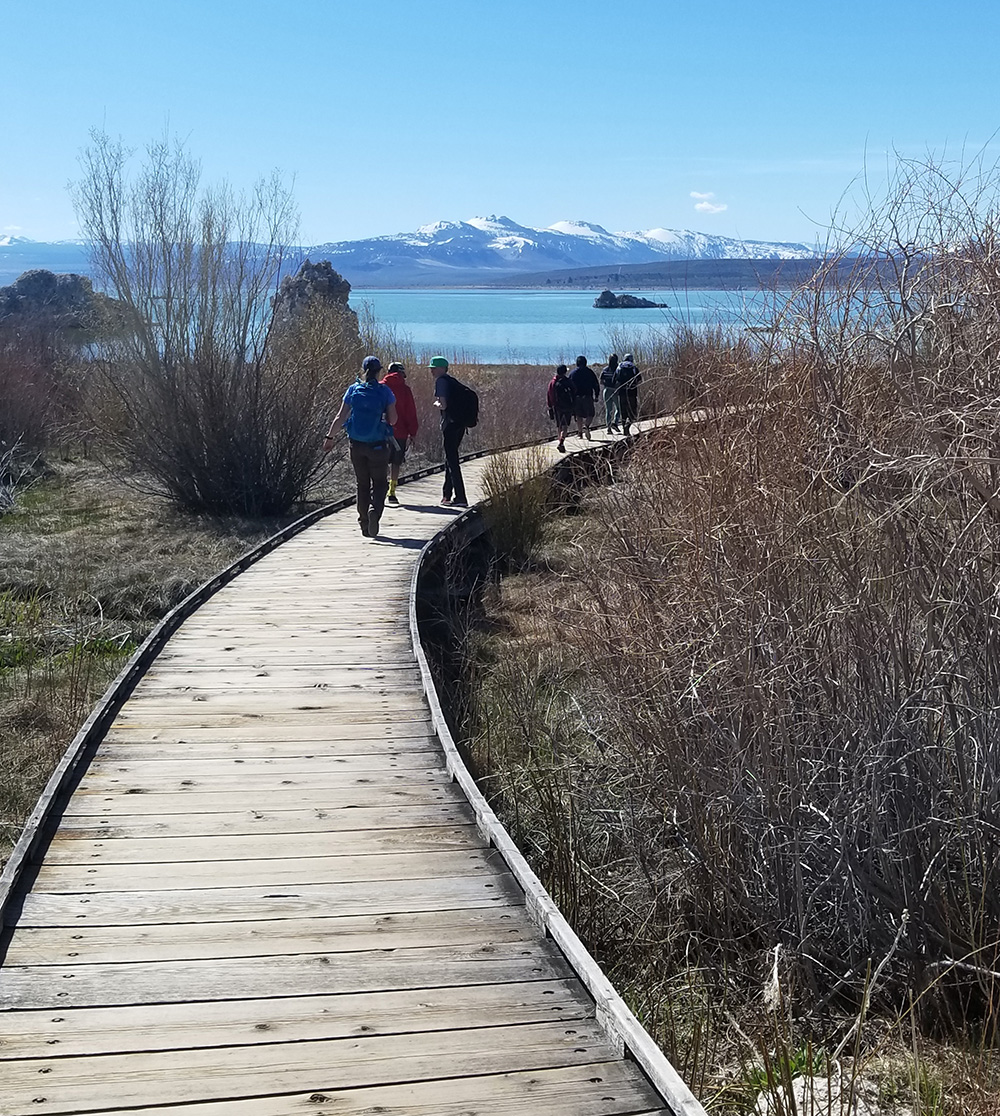
We met with the Lee Vining students in the classroom to talk about migratory birds, pollution issues around Mono Lake, bird identification basics, and how to use binoculars. Each student randomly selected a bird we were likely to see in the field to study, become the class expert on that bird, and then be ready to share what they learned while out in the field.
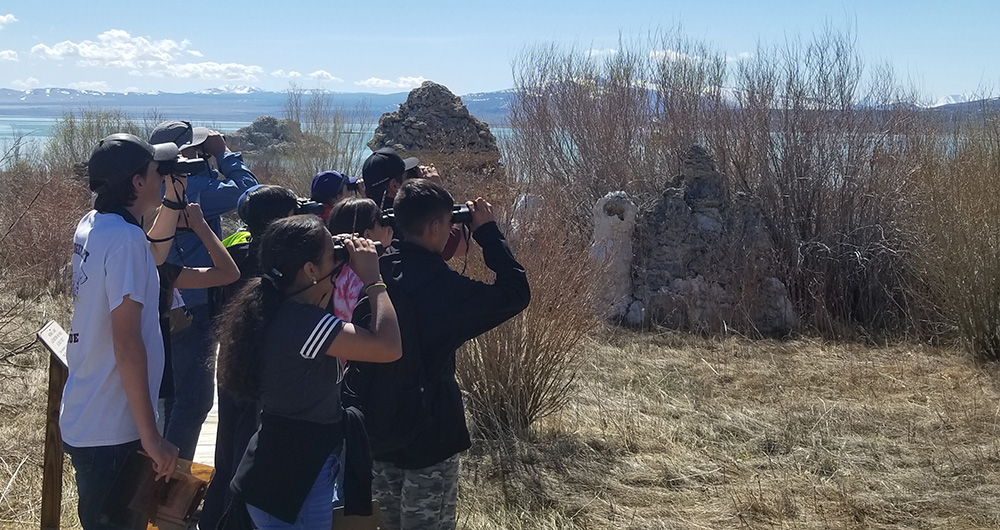
A few weeks later the class took a field trip to Mono Lake County Park to go birding among the cottonwoods and down the boardwalk to Mono Lake. Though the students have been to County Park many times while living in Lee Vining, they were there with a new purpose and saw the park through binoculars for the first time. Many of the student got to see the birds they had studied and take time to describe their bird’s life history to the class. The students were great naturalists! They kept quiet and attentive as they birded County Park.
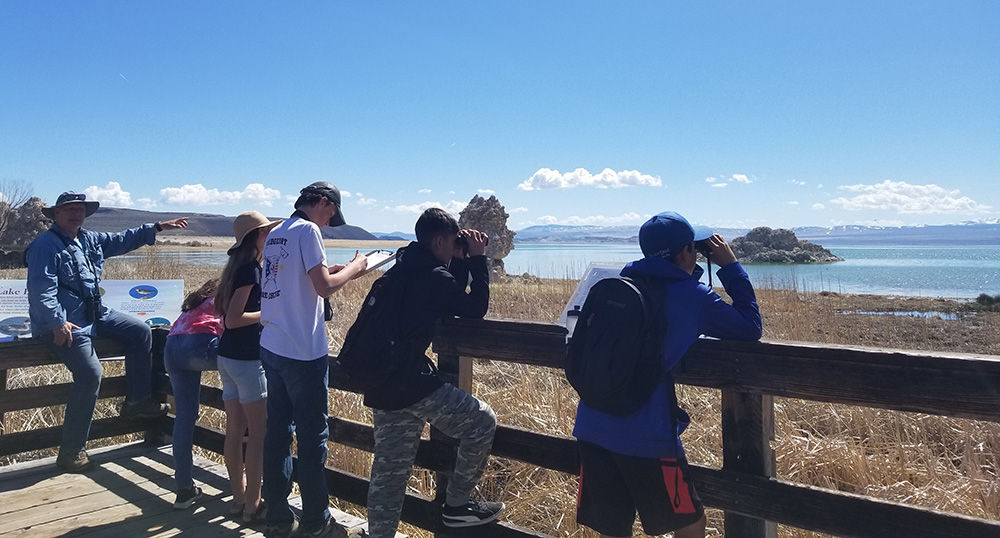
We also conducted a trash pick-up with a citizen science component. We tracked every piece of trash we collected to report and compare with other students across the western hemisphere. Compared to the other students participating in WMBD, we landed in the middle of the trash spectrum. One group from Canada only found two pieces of trash in their wetland, while some students from the Dominican Republic walked along shorelines covered in plastic bottles.
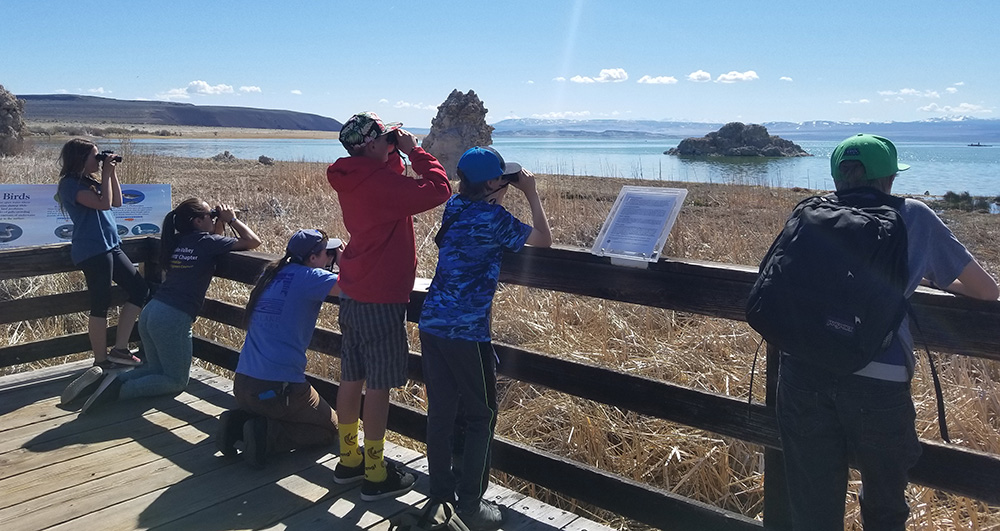
To conclude the event, we had a live video conference with students in Canada, Texas, the Dominican Republic, and Colombia to share what we had experienced at each wetland as well as ask each other questions. It was great for our diverse students from Lee Vining to share in English and Spanish and make connections with other countries across our hemisphere.
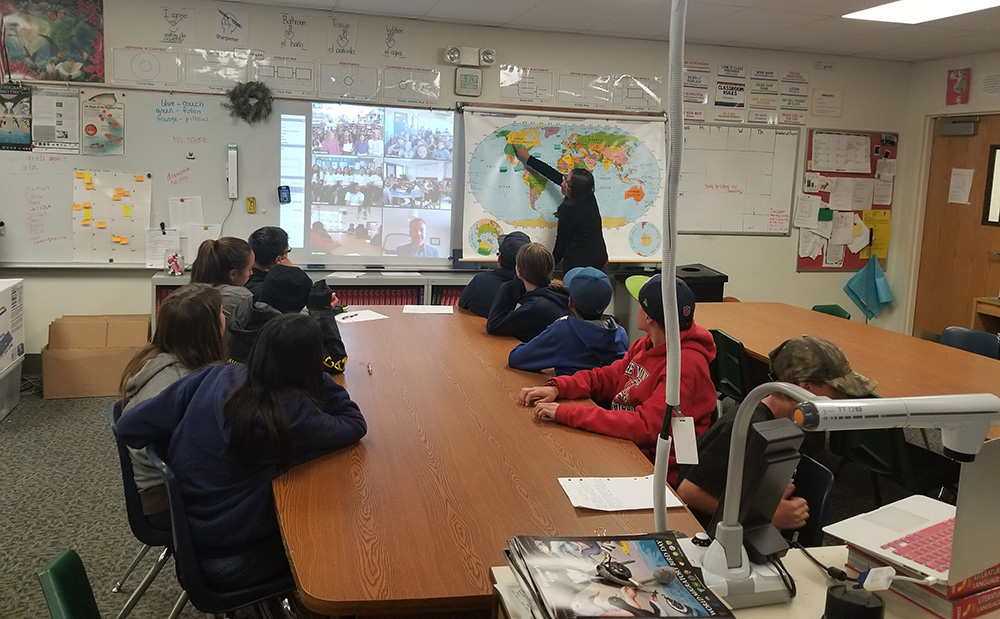
We are looking forward to participating in World Migratory Bird Day with Lee Vining students for many years to come.
